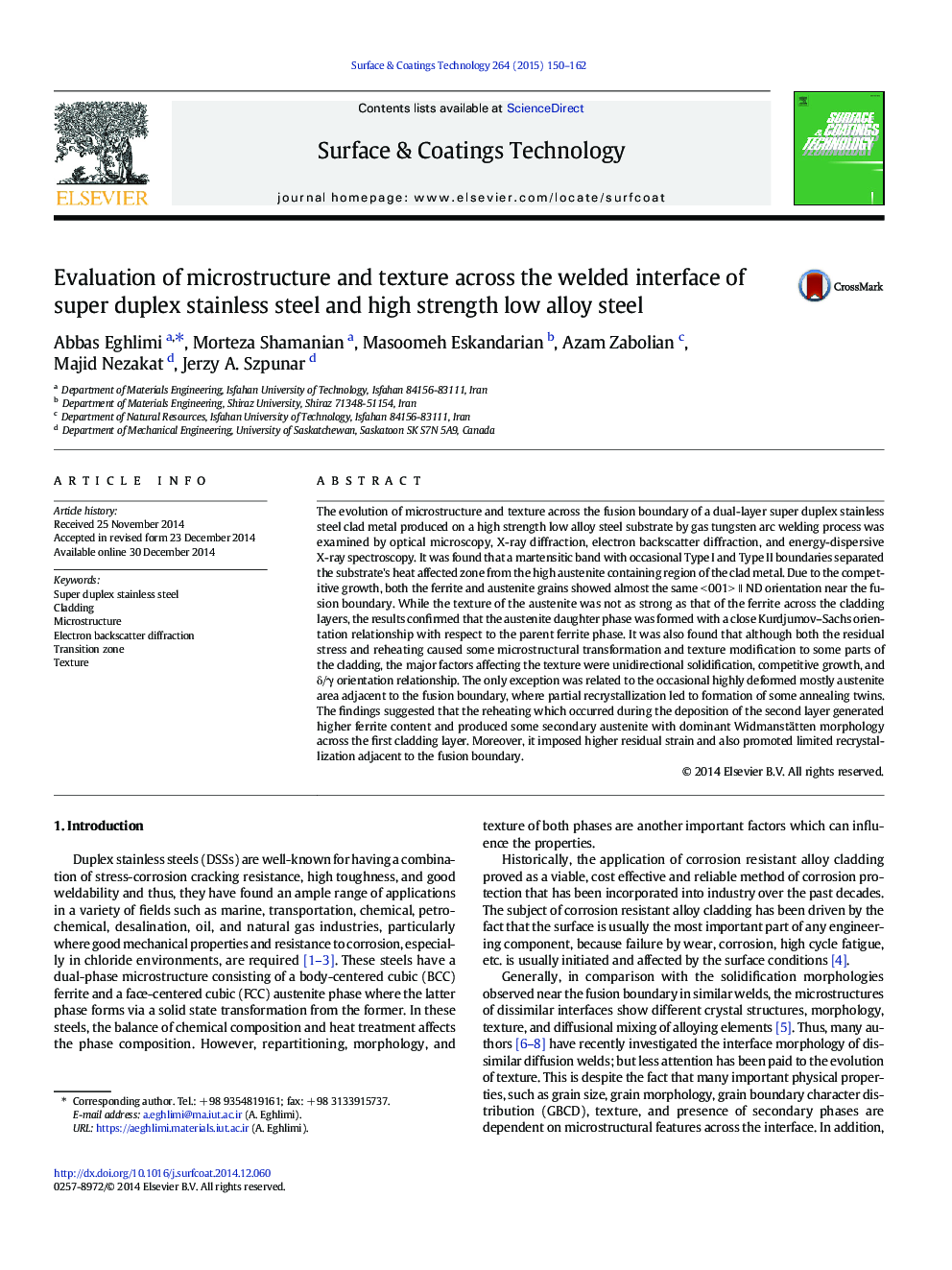| کد مقاله | کد نشریه | سال انتشار | مقاله انگلیسی | نسخه تمام متن |
|---|---|---|---|---|
| 1657269 | 1517615 | 2015 | 13 صفحه PDF | دانلود رایگان |

• Ferrite grains with < 001 > ║ ND were dominant in the first clad layer.
• Austenite showed < 100 > ║ ND across the first and < 011 > ║ ND orientation across the second layer.
• Austenite texture was weaker than that of ferrite across the cladding.
• Main factors affecting the texture were competitive solidification and δ/γ OR.
• Partial recrystallization was observed in the area adjacent to the fusion boundary.
The evolution of microstructure and texture across the fusion boundary of a dual-layer super duplex stainless steel clad metal produced on a high strength low alloy steel substrate by gas tungsten arc welding process was examined by optical microscopy, X-ray diffraction, electron backscatter diffraction, and energy-dispersive X-ray spectroscopy. It was found that a martensitic band with occasional Type I and Type II boundaries separated the substrate's heat affected zone from the high austenite containing region of the clad metal. Due to the competitive growth, both the ferrite and austenite grains showed almost the same < 001 > ║ ND orientation near the fusion boundary. While the texture of the austenite was not as strong as that of the ferrite across the cladding layers, the results confirmed that the austenite daughter phase was formed with a close Kurdjumov–Sachs orientation relationship with respect to the parent ferrite phase. It was also found that although both the residual stress and reheating caused some microstructural transformation and texture modification to some parts of the cladding, the major factors affecting the texture were unidirectional solidification, competitive growth, and δ/γ orientation relationship. The only exception was related to the occasional highly deformed mostly austenite area adjacent to the fusion boundary, where partial recrystallization led to formation of some annealing twins. The findings suggested that the reheating which occurred during the deposition of the second layer generated higher ferrite content and produced some secondary austenite with dominant Widmanstätten morphology across the first cladding layer. Moreover, it imposed higher residual strain and also promoted limited recrystallization adjacent to the fusion boundary.
Journal: Surface and Coatings Technology - Volume 264, 25 February 2015, Pages 150–162